Abstract
Whole cells of the parent strain of Beijerinckia, grown with succinate and biphenyl, oxidized dibenzo-p-dioxin and several chlorinated dioxins. The rate of oxidation of the chlorinated dibenzo-p-dioxins decreased with an increasing degree of chlorine substitution. A mutant strain (B8/36) of Beijerinckia oxidized dibenzo-p-dioxin to cis-1,2-dihydroxy-1,2-dihydrodibenzo-p-dioxin. The mutant organism also oxidized two monochlorinated dibenzo-p-dioxins to cis-dihydrodiols. No metabolites were detected from two dichlorinated dibenzo-p-dioxins. Growth of the parent strain of Beijerinckia on succinate was inhibited after 4 h when 0.05% dibenzo-p-dioxin was present in the culture medium. Resting cell suspensions of the parent organism, previously grown with succinate and biphenyl, oxidized dibenzo-p-dioxin to a compound identified as 1,2-dihydroxydibenzo-p-dioxin. Further degradation of this metabolite was not detected, as the compound was found to be a potent mixed-type inhibitor of two ring-fission oxygenases present in this organism.
Full text
PDF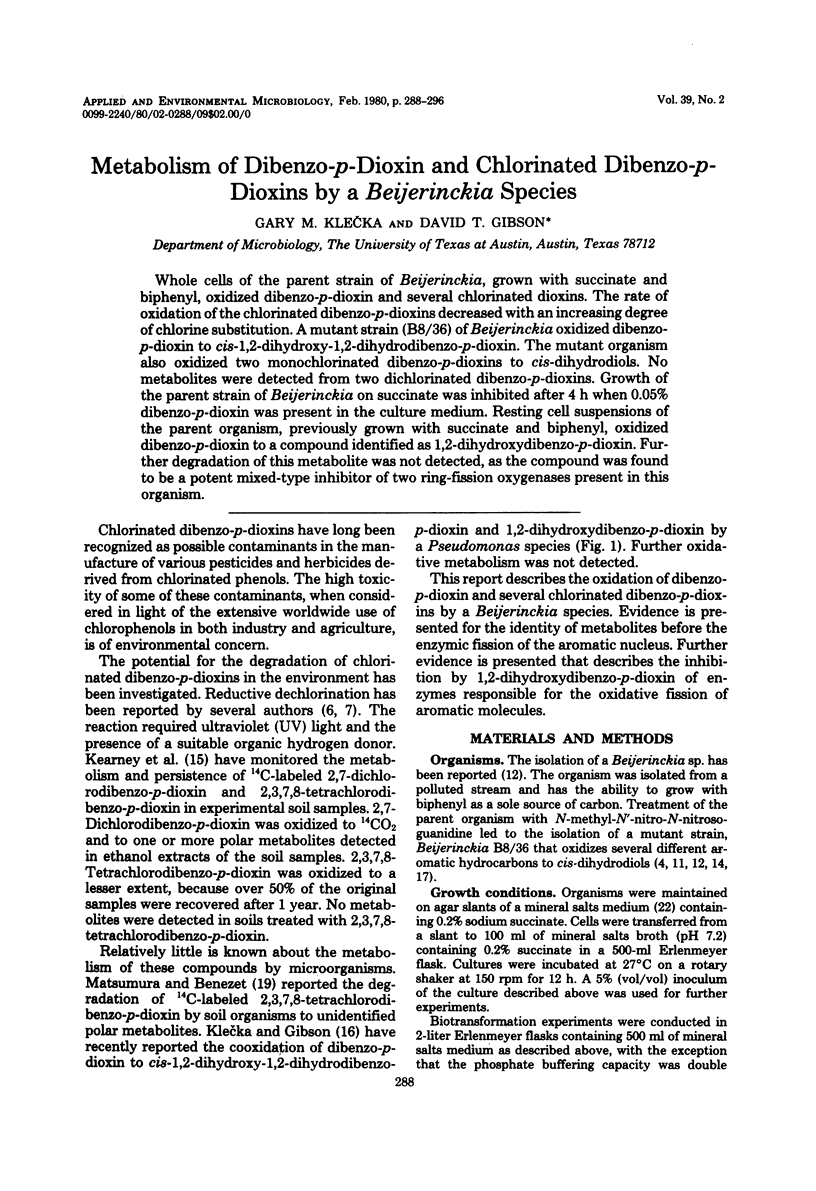
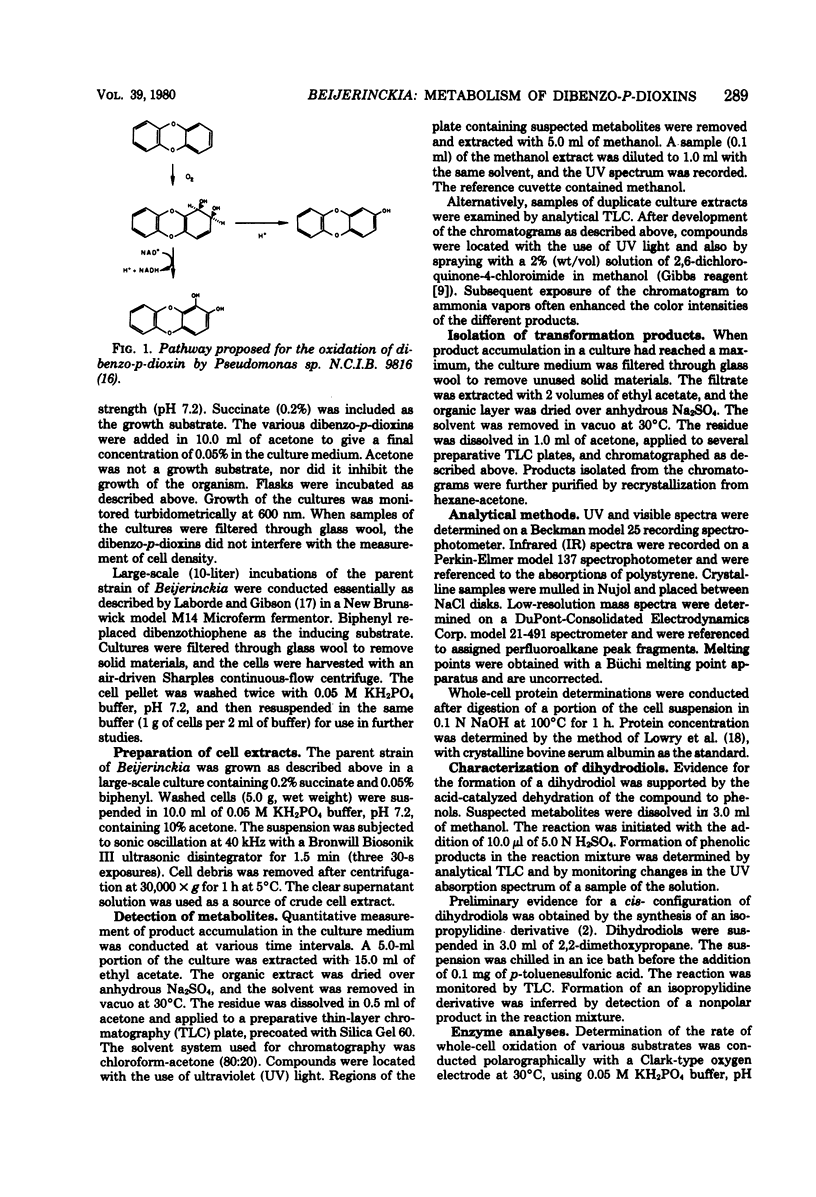
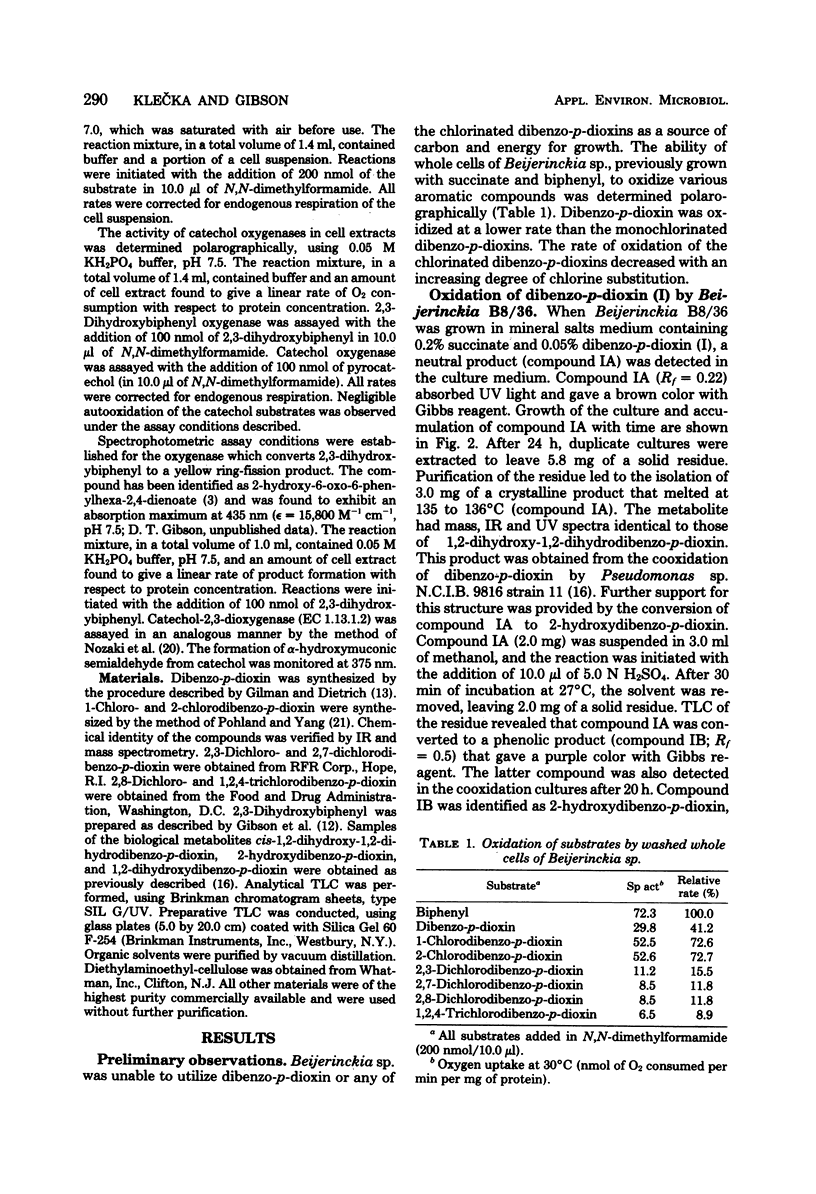
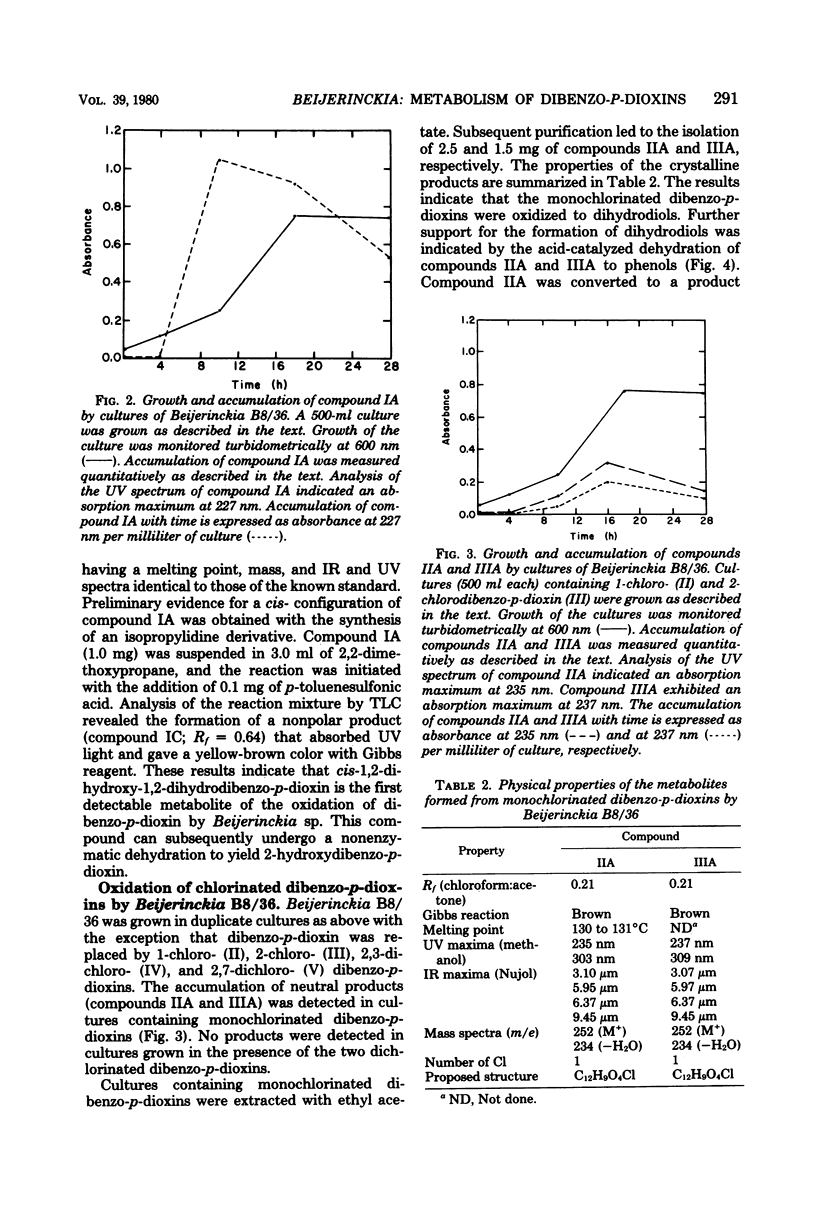
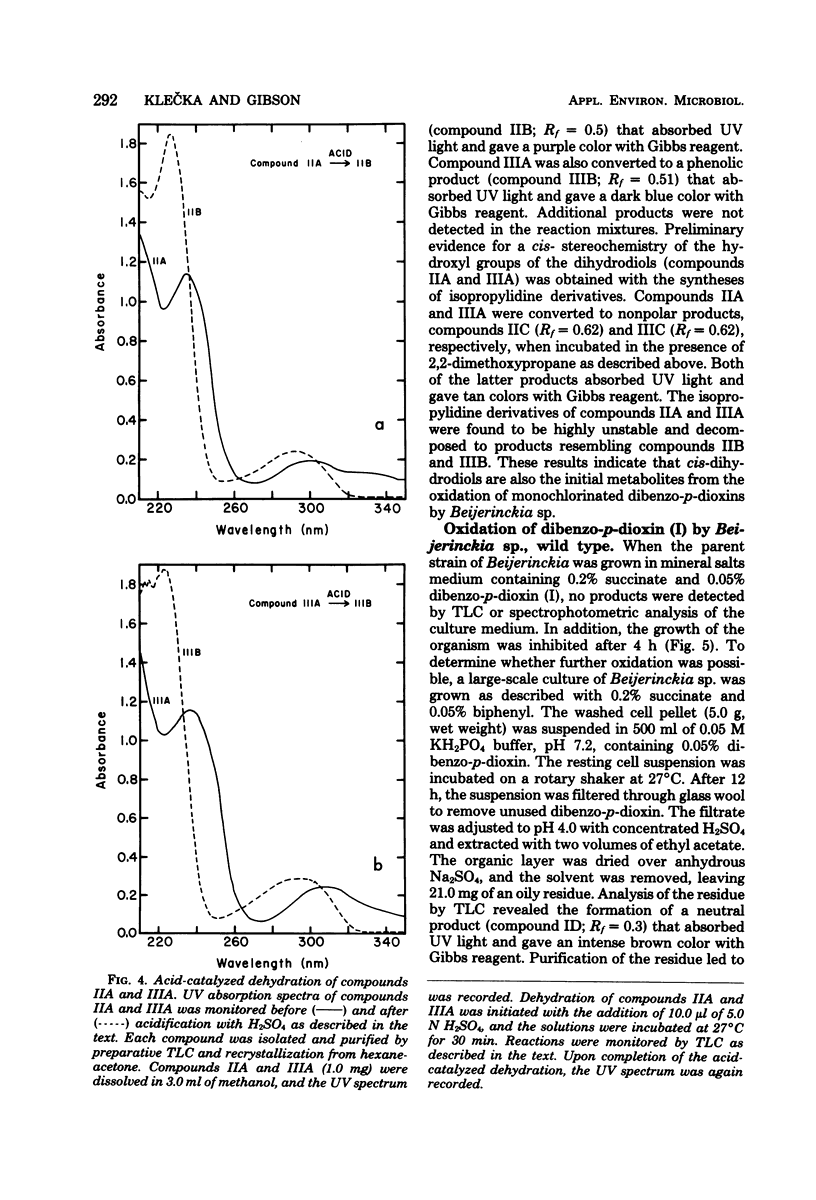
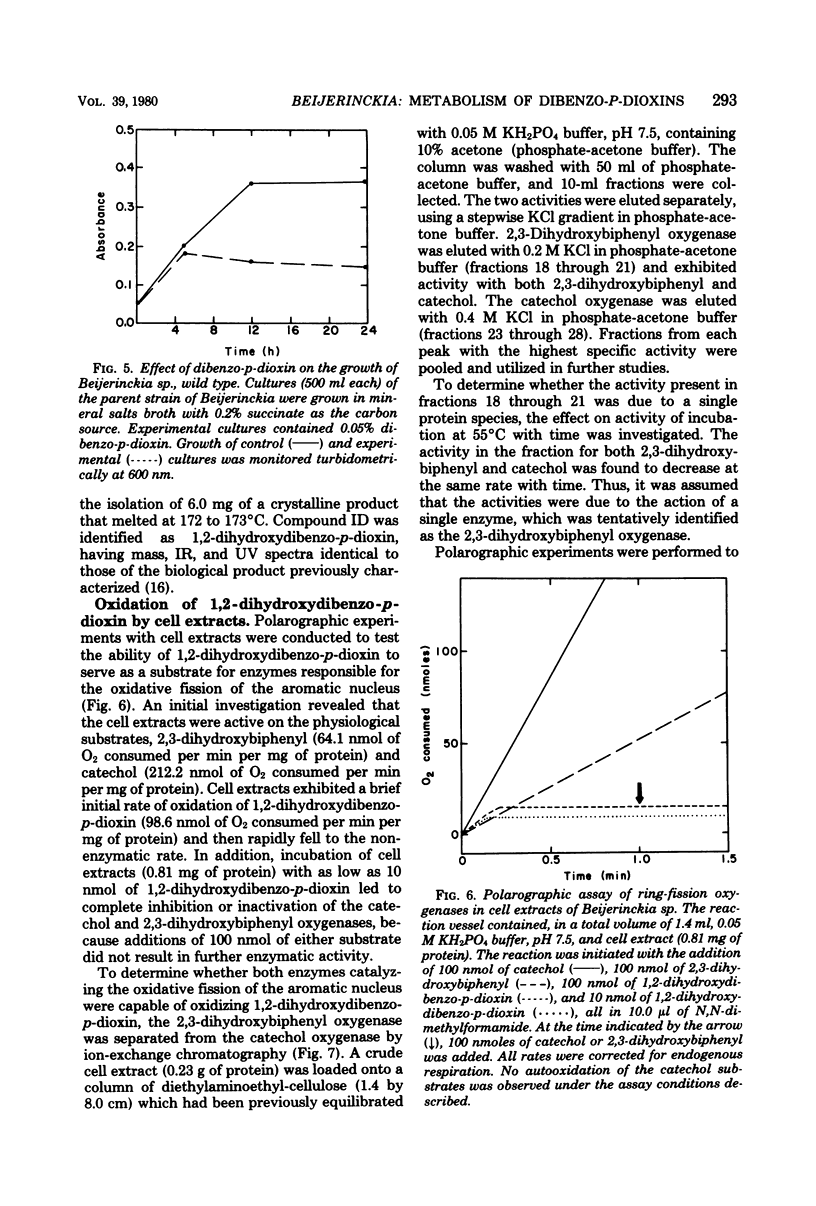
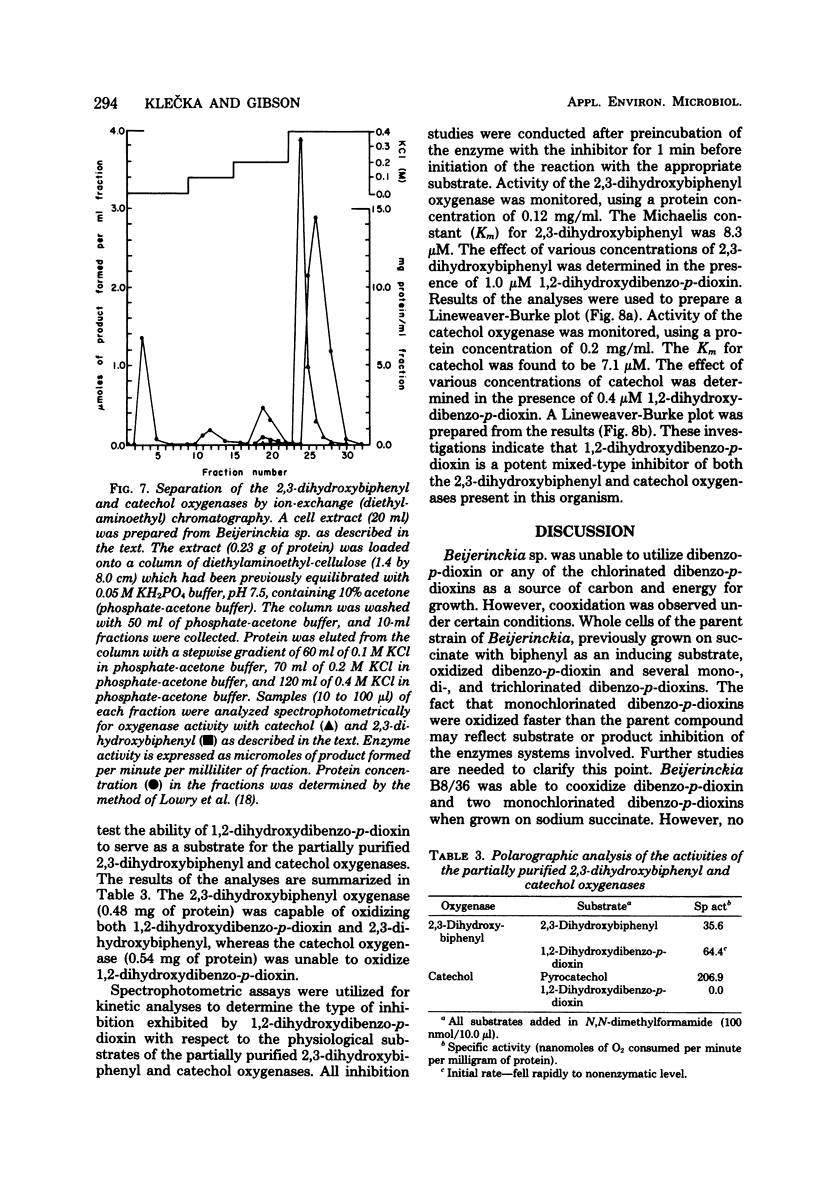
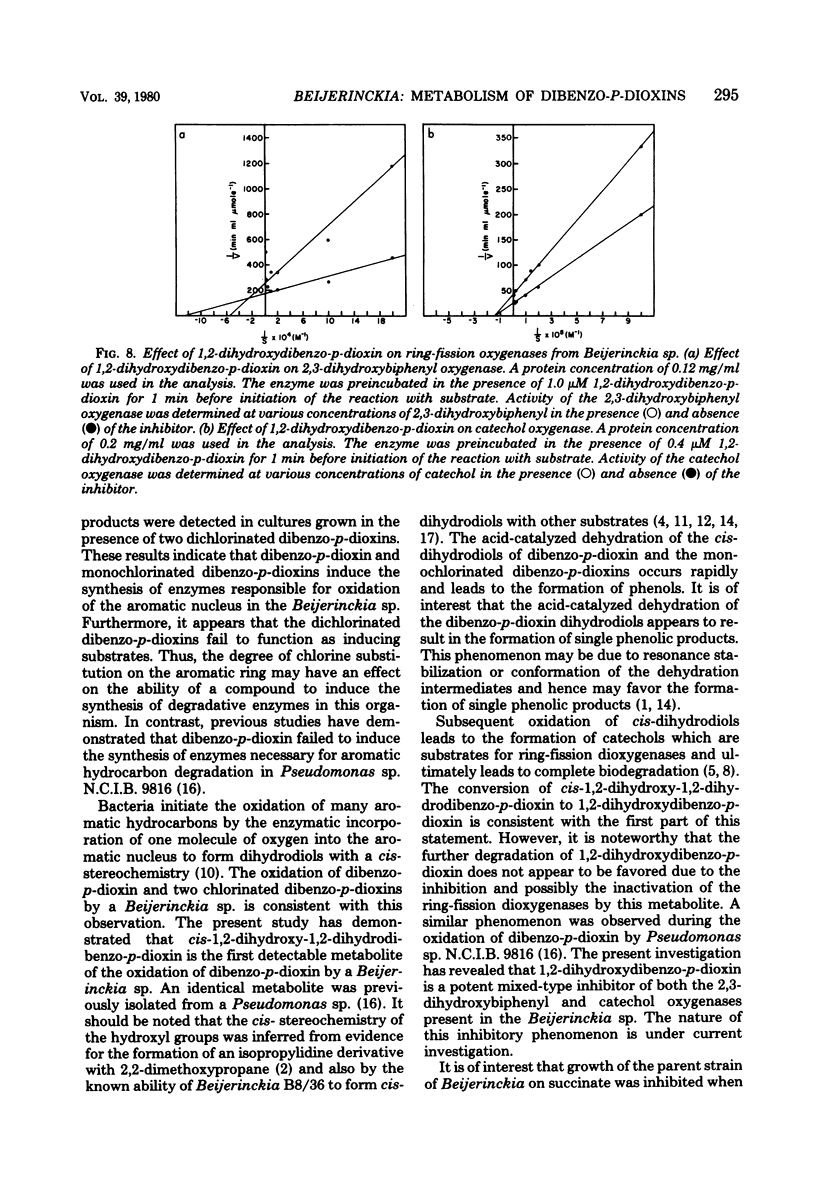
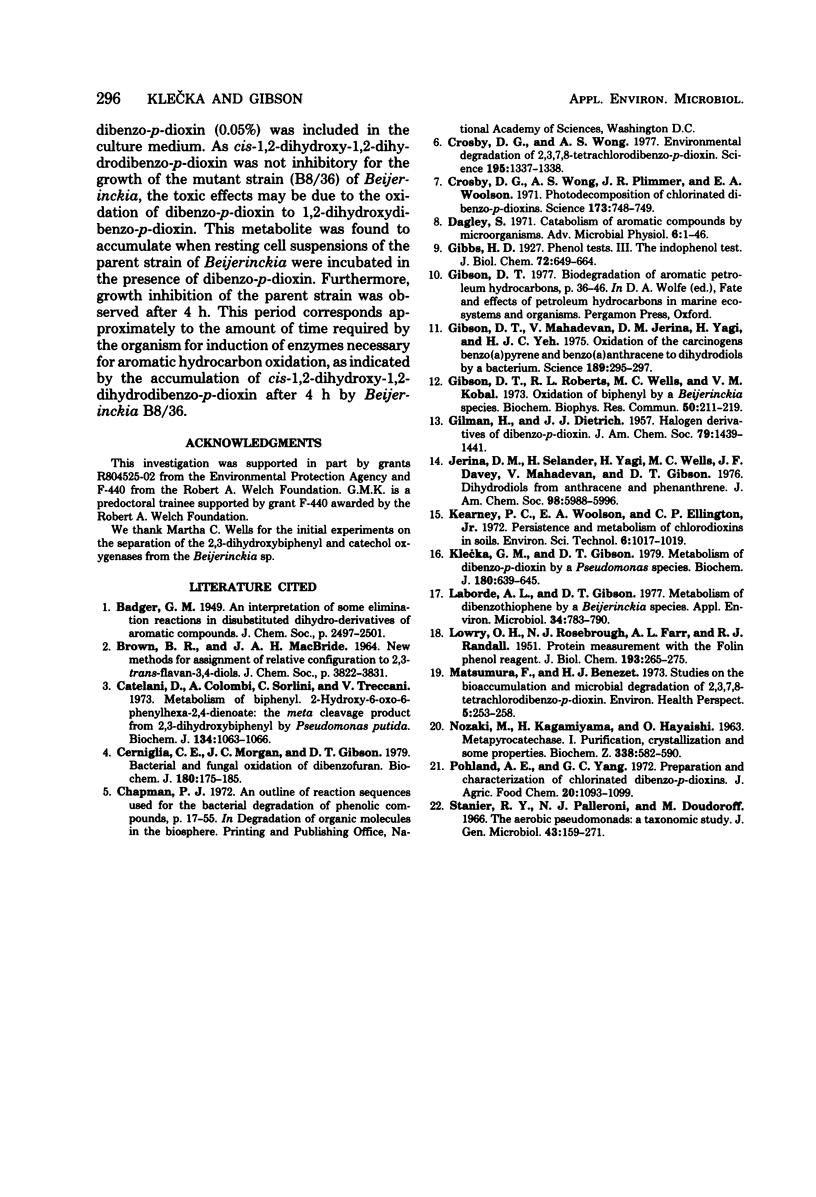
Selected References
These references are in PubMed. This may not be the complete list of references from this article.
- Catelani D., Colombi A., Sorlini C., Treccani V. Metabolism of biphenyl. 2-Hydroxy-6-oxo-6-phenylhexa-2,4-dienoate: the meta-cleavage product from 2,3-dihydroxybiphenyl by Pseudomonas putida. Biochem J. 1973 Aug;134(4):1063–1066. doi: 10.1042/bj1341063. [DOI] [PMC free article] [PubMed] [Google Scholar]
- Cerniglia C. E., Morgan J. C., Gibson D. T. Bacterial and fungal oxidation of dibenzofuran. Biochem J. 1979 Apr 15;180(1):175–185. doi: 10.1042/bj1800175. [DOI] [PMC free article] [PubMed] [Google Scholar]
- Crosby D. G., Wong A. S. Environmental degradation of 2,3,7,8-tetrachlorodibenzo-p-dioxin (TCDD). Science. 1977 Mar 25;195(4284):1337–1338. doi: 10.1126/science.841331. [DOI] [PubMed] [Google Scholar]
- Crosby D. G., Wong A. S., Plimmer J. R., Woolson E. A. Photodecomposition of Chlorinated Dibenzo-p-Dioxins. Science. 1971 Aug 20;173(3998):748–749. doi: 10.1126/science.173.3998.748. [DOI] [PubMed] [Google Scholar]
- Dagley S. Catabolism of aromatic compounds by micro-organisms. Adv Microb Physiol. 1971;6(0):1–46. doi: 10.1016/s0065-2911(08)60066-1. [DOI] [PubMed] [Google Scholar]
- Gibson D. T., Mahadevan V., Jerina D. M., Yogi H., Yeh H. J. Oxidation of the carcinogens benzo [a] pyrene and benzo [a] anthracene to dihydrodiols by a bacterium. Science. 1975 Jul 25;189(4199):295–297. doi: 10.1126/science.1145203. [DOI] [PubMed] [Google Scholar]
- Gibson D. T., Roberts R. L., Wells M. C., Kobal V. M. Oxidation of biphenyl by a Beijerinckia species. Biochem Biophys Res Commun. 1973 Jan 23;50(2):211–219. doi: 10.1016/0006-291x(73)90828-0. [DOI] [PubMed] [Google Scholar]
- Jerina D. M., Selander H., Yagi H., Wells M. C., Davey J. F., Mahadevan V., Gibson D. T. Dihydrodiols from anthracene and phenanthrene. J Am Chem Soc. 1976 Sep 15;98(19):5988–5996. doi: 10.1021/ja00435a035. [DOI] [PubMed] [Google Scholar]
- Klecka G. M., Gibson D. T. Metabolism of dibenzo[1,4]dioxan by a Pseudomonas species. Biochem J. 1979 Jun 15;180(3):639–645. doi: 10.1042/bj1800639. [DOI] [PMC free article] [PubMed] [Google Scholar]
- LOWRY O. H., ROSEBROUGH N. J., FARR A. L., RANDALL R. J. Protein measurement with the Folin phenol reagent. J Biol Chem. 1951 Nov;193(1):265–275. [PubMed] [Google Scholar]
- Laborde A. L., Gibson D. T. Metabolism of dibenzothiophene by a Beijerinckia species. Appl Environ Microbiol. 1977 Dec;34(6):783–790. doi: 10.1128/aem.34.6.783-790.1977. [DOI] [PMC free article] [PubMed] [Google Scholar]
- Matsumura F., Benezet H. J. Studies on the bioaccumulation and microbial degradation of 2,3,7,8-tetrachlorodibenzo-p-dioxin. Environ Health Perspect. 1973 Sep;5:253–258. doi: 10.1289/ehp.7305253. [DOI] [PMC free article] [PubMed] [Google Scholar]
- NOZAKI M., KAGAMIYAMA H., HAYAISHI O. METAPYROCATECHASE. I. PURIFICATION, CRYSTALLIZATION AND SOME PROPERTIES. Biochem Z. 1963;338:582–590. [PubMed] [Google Scholar]
- Pohland A. E., Yang G. C. Preparation and characterization of chlorinated dibenzo-p-dioxins. J Agric Food Chem. 1972 Nov-Dec;20(6):1093–1099. doi: 10.1021/jf60184a055. [DOI] [PubMed] [Google Scholar]
- Stanier R. Y., Palleroni N. J., Doudoroff M. The aerobic pseudomonads: a taxonomic study. J Gen Microbiol. 1966 May;43(2):159–271. doi: 10.1099/00221287-43-2-159. [DOI] [PubMed] [Google Scholar]


